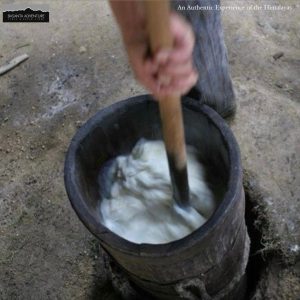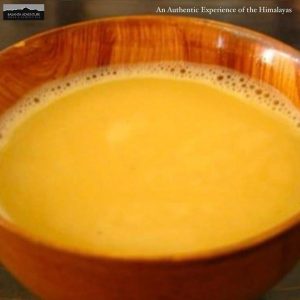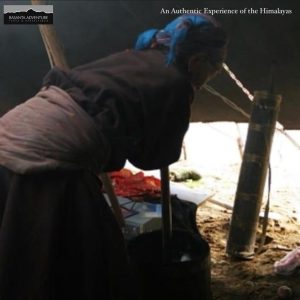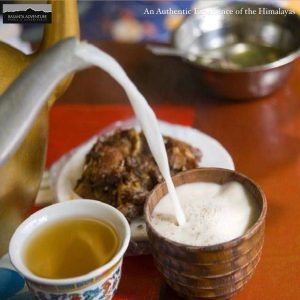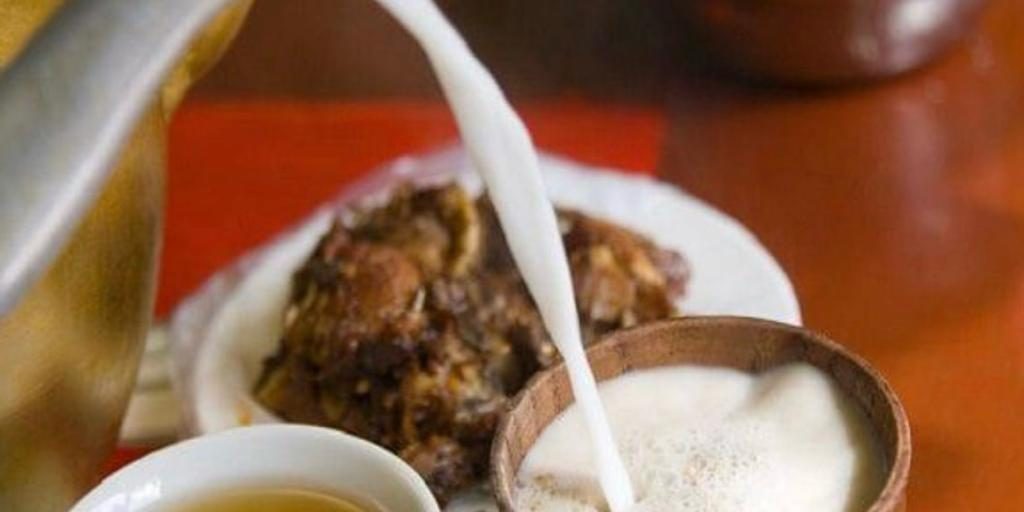
- December 19, 2023
- Nepal
Yak butter tea
“Butter tea, known as ‘Bhue Cha’ in Tibetan and ‘Su Cha’ in the Sherpa community, is a cherished beverage in the Himalayan regions.
This centuries-old tradition made from Chya Bhakchu (compressed tea leaves), Mha(yak butter), hot water, and Chha (salt to create a salty, caloric, and energizing drink). In the high-altitude conditions of the Himalayas, butter tea is a daily ritual and a vital part of the sparse diet, offering essential nourishment and calories. Originally born out of survival, the combination of butter tea has deep cultural roots, supported by Tibetan medicine for its supposed benefits in sharpening the mind and body.
Introduced to the region in the tenth century, tea became a means of survival, utilizing available resources. The process involves boiling tea leaves until dark brown, straining, and then churning with yak butter and salt. Traditionally stirred in a wooden barrel, modern methods use electric mixers. The resulting tea, served in cups, leaves a distinctive salty flavor. Given the cold Himalayan weather, people consume butter tea throughout the day to stay warm and hydrated.
Butter tea’s unique taste becomes addictive. Butter tea is often enjoyed with Tsampa, a nutritious barley-based snack, by mountain people. The evolution from survival necessity to cultural staple highlights the enduring significance of butter tea in the Himalayan way of life.”
Basant Bajracharya
